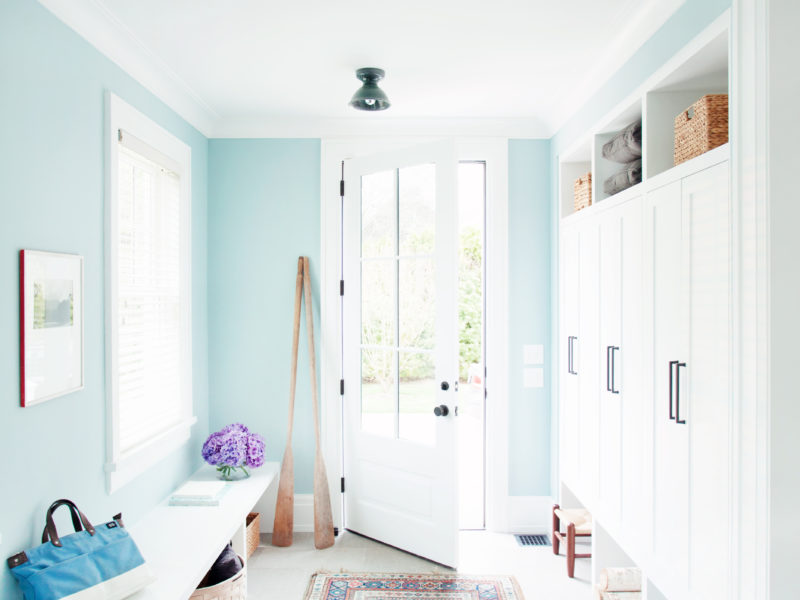

Think about it: You arrive at home after a strenuous drive in bumper-to-bumper traffic on a Friday evening, and the first thing you do is kick off your shoes, throw down your keys, and head to your most comfortable sofa and unwind after a long week. You spend the majority of what remains of your evening either browsing social media in your living room, or enjoying a meal in your dining room, or falling asleep in your bedroom; or, perhaps — most likely — a mix of the three, until Saturday arrives.
Or, think of another typical day: Saturday arrives, and as night falls, you are welcomed into your friend’s home, which has been set up for a fabulous and intimate social gathering. At some point during the evening, you wander the halls from room to room, either reclining with a cocktail in a lounge, finding your way to the powder room to freshen up, or simply sitting for what seems like hours at the kitchen island with a glass (or multiple glasses) of rosé.
While it’s clear that the majority of our time spent in homes, whether those of our own or others, is typically in standing or sitting positions within single spaces designed for various uses, the reality is that — extreme examples of open floor plans aside — we always have and always will need transitional spaces like foyers and halls to get from point A to point B.
Unfortunately, it’s truly mind-blowing how often we see transitional spaces of various types falling flat. Perhaps it’s the foyer with nothing in it save for a single oddly scaled bench, or the bedroom corridor with a serious disconnect between positive and negative wall space that is a never-ending work in progress, or a mudroom that is literally and figuratively muddy. Many people tend to leave halls for last — and for good reason. Good design can be costly, and budgets arguably have a higher impact on the spaces we use more often, and particularly for longer periods of uninterrupted time.
However, to that I reference the (seriously overused) saying: “It’s about the journey, not the destination.” It is practically burned for eternity into memes featuring a backdrop of landscape photography, or printed on faux bois wall signs from discount retailers. But it also does have a very real and more worthwhile application for interiors, which is to say that it’s not only wise, but fun, to spend some time bringing to life a vision that energizes those in-between spaces we all need to spend time in, anyway. Because all external stimuli, regardless of temporality, have a measurable positive or negative impact on our well-being — a fact that underpins the importance of interior design and decorating as entire industries.
In foyers, consider elements that will be used but also standalone as interesting pieces. For a place to throw down your keys, incorporate an appropriately thin yet solid console table with a tray on top to catch your pocket possessions. Add a fragrance diffuser to set the tone and resonate with the senses other than sight. Soften the ground with a durable area rug. Layer in a seat for taking on and taking off your shoes more comfortably. This is almost always the first impression for visitors, so it’s worth making it count visually, while simultaneously being useful on a personal level.
For corridors, taking into account the overall width limitations, bring in a menagerie of elements to invite the viewer to pause and appreciate the space around them. For extra-wide corridors, take advantage of this openness by installing a selective punctuation of surfaces and seating to either display objects or perhaps an interesting chair, respectively. As a very rough guide, art should be scaled appropriately; consider saving the massive works for rooms that allow people to stand back and see them as usually intended. Corridors are more about viewing and less about using (with some exceptions, of course), so don’t be afraid to let art sing and display those somewhat fragile three-dimensional pieces in your collection. Runners are effective at dampening sound transmission, as are specialty wall coverings of considerable thickness. Like an urban planner recommending traffic attenuating measures to slow down cars in the name of pedestrian safety and comfort, it’s worth giving yourself and your guests a reason to walk at a more leisurely pace, and perhaps even stop every so often to admire something meaningful.
With mudrooms, if existent, function generally takes precedence over form. These are often the “real” transitional spaces from outdoors to indoors that are mostly used by residents, after all. With that in mind, therein lies a great opportunity to include some unexpected solutions like handwoven baskets, vintage and imperfect rugs that only increase in beauty with use, idiosyncratic art that might be a little too personal for guests but entertaining for the owners, and of course, a more daring wall paint or covering that only the dweller needs to love. In short, mudrooms can actually be a particularly exciting laboratory for experimentation and risk-taking. Especially given that if some decision does not quite pay off, there’s little pressure to invest in immediate changes.
While the aforementioned highlights just three examples of transitional spaces, this overall strategy of dignifying the secondary can be used in countless other, less clearly defined instances as well. While it may be more manageable to tackle interiors from big to small, one room at a time, it’s always worth keeping transitional spaces in mind from the very beginning of your project; and, before the very end of your budget.
 More Posts from Andrew Bowen
More Posts from Andrew Bowen